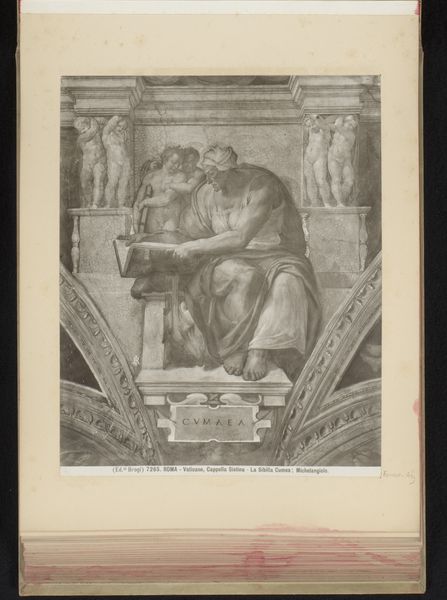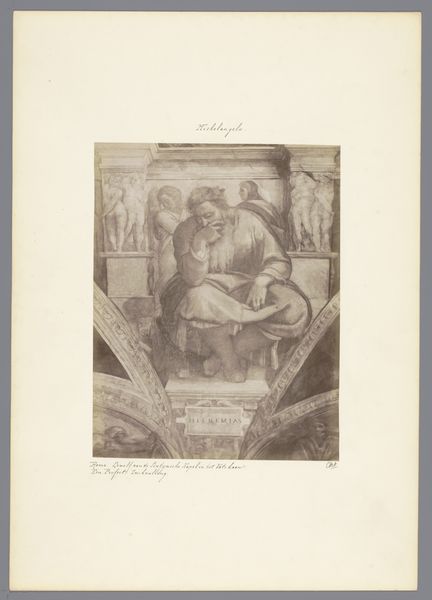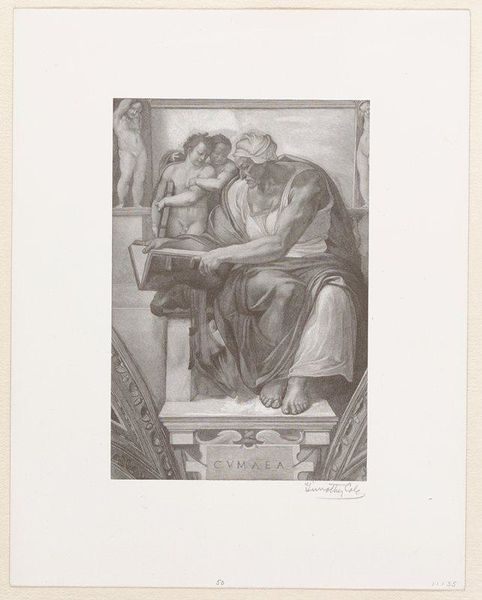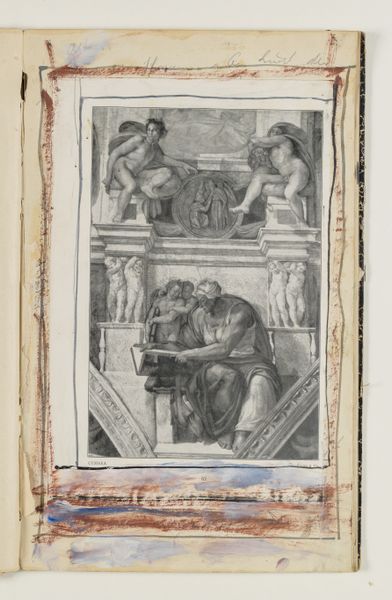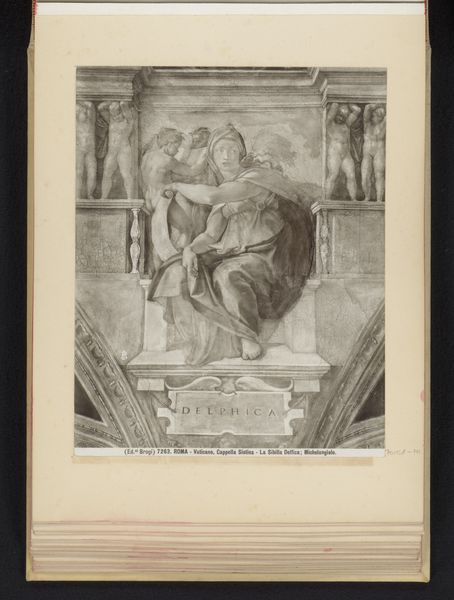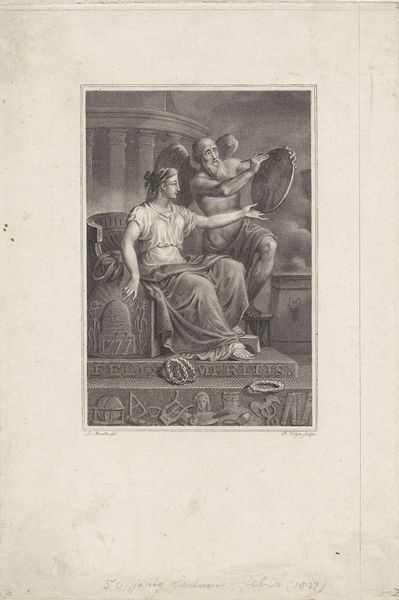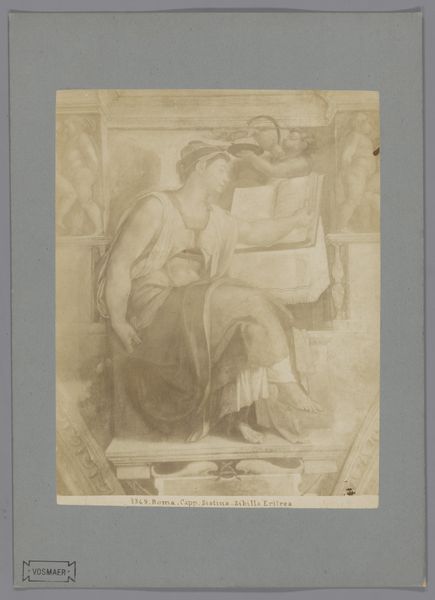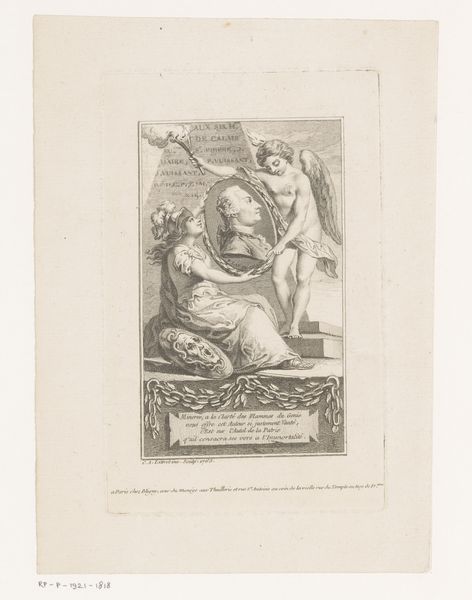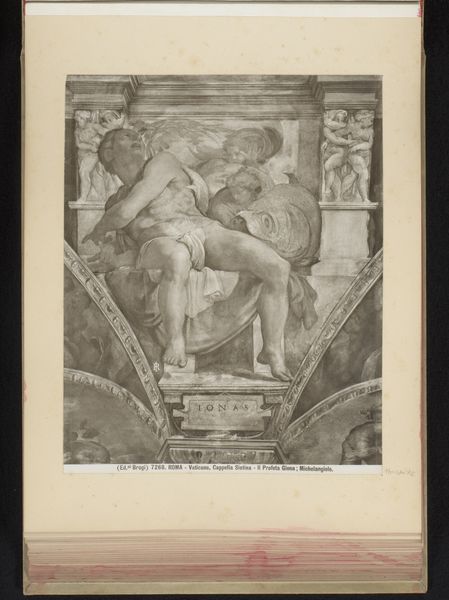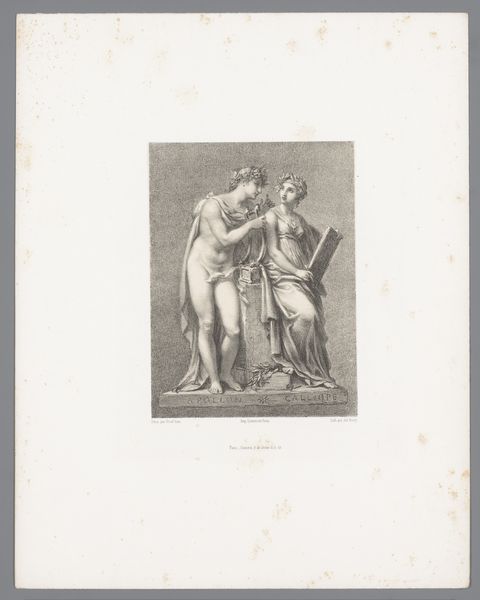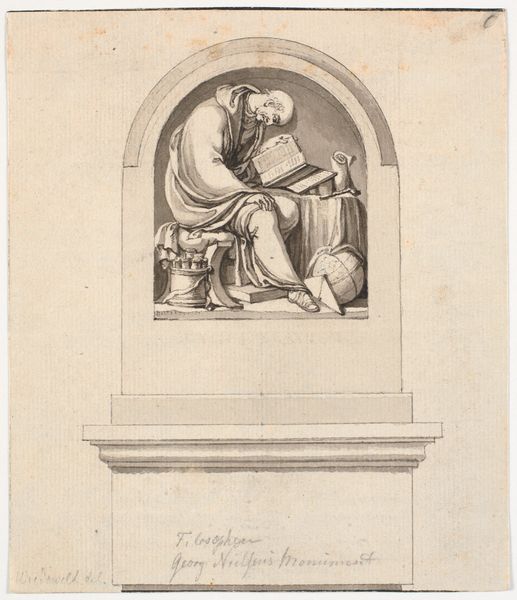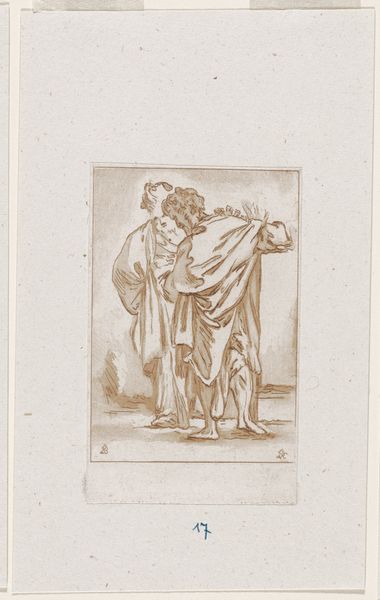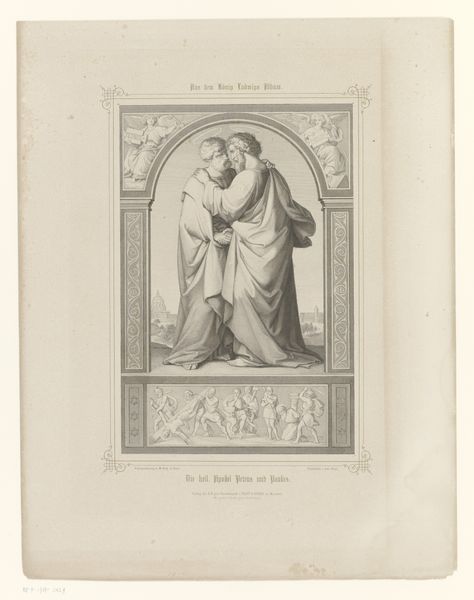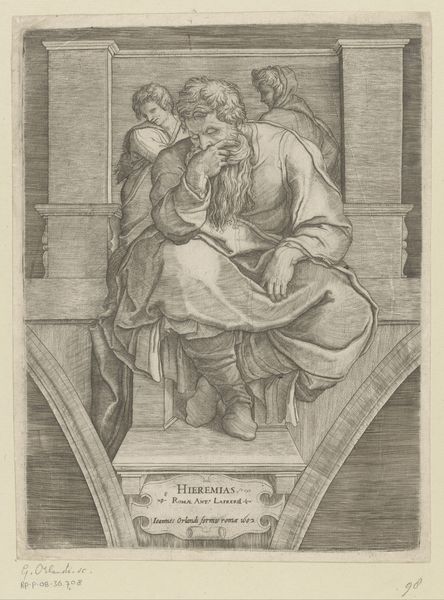
Fotoreproductie van een detail van het fresco door Michelangelo in de Sixtijnse Kapel in Rome, voorstellend Sibille van Cumae c. 1875 - 1900
0:00
0:00
print, fresco, photography, gelatin-silver-print
#
narrative-art
# print
#
figuration
#
form
#
fresco
#
11_renaissance
#
photography
#
chiaroscuro
#
gelatin-silver-print
#
line
#
history-painting
#
academic-art
#
italian-renaissance
#
realism
Dimensions: height 241 mm, width 187 mm
Copyright: Rijks Museum: Open Domain
Curator: What strikes me immediately is the overwhelming sense of contemplation emanating from this photographic print. The figure seems burdened by the weight of her own prophecies. Editor: This image, dating from around 1875-1900, is a reproduction of a detail from Michelangelo’s fresco in the Sistine Chapel in Rome. It depicts the Cumaean Sibyl. I’m interested in the materiality of the reproduction itself – this gelatin silver print transforming a fresco from the High Renaissance. It’s quite a jump in technique and material, isn't it? Curator: Absolutely, and that transformation changes the aura. The fresco, situated high within the chapel, speaks to the divine, and the artist’s virtuosity is part of the artwork's mystique. But this photographic rendering offers a sense of immediacy, a starkness. Notice how the photographic medium enhances the shadows, emphasizing her aged features. We're confronted with mortality itself. Editor: Right. It's a mediation of labor – Michelangelo's, certainly, in creating the original fresco and the labour involved in constructing the chapel but then also the photographer's labour in re-presenting it. How many steps removed from the "original" experience are we as viewers here and what sort of social function does such reproduction serve? It brings the art to the masses, I suppose, cheapening it but also broadening its reach. Curator: Perhaps it does both. In some ways it democratizes, granting wider access to hallowed artistic spaces. Yet, at the same time, something ineffable is inevitably lost in the translation. The specific symbolic architecture inherent in the Sistine Chapel--the intended viewing experience--dissolves in the act of extraction and re-presentation. Editor: And what is revealed? We get a sort of scientific analysis of Renaissance artistic production, with the tonal range creating new patterns. We see a reproducible image for a new industrial age where art begins to participate in a wider economy than simple private or religious commission. Curator: An insightful point. These shifts alter not only our perception but also the cultural role of these icons. This photograph acts as an invitation to reinterpret historical mythologies. It's no longer about merely observing established stories; it is about engaging and questioning their modern-day relevance. Editor: It makes me think about the complicated routes artifacts can take –from paint and plaster on a monumental ceiling, to the chemistry of photographic paper in an album somewhere... The transformations give us new access. Curator: It is fascinating how each rendition imbues the figure of the Cumaean Sibyl with altered resonance, shaped by different materials and mediums. Editor: Indeed, each reflecting its own distinct historical and social context.
Comments
No comments
Be the first to comment and join the conversation on the ultimate creative platform.
